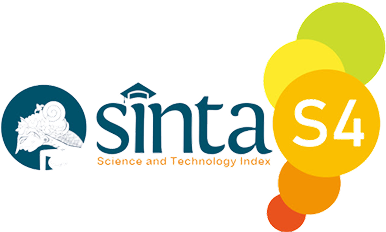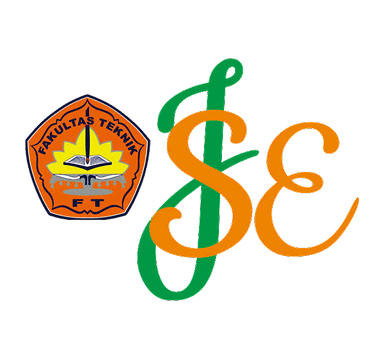Removal of Methylene Blue From Aqueous Solutions by Adsorption on Alum Sludge: Effect of Operating Parameters
Keywords:
Sludge reuse, wastewater treatment, adsorption, operating parameters, water matrixAbstract
In developing countries, high capital, operational costs, limited space are the main challenges to implement appropriate sludge treatment system. Thus, research about reutilization sludge are urgently needed. In this study, alum sludge from sedimentation basin of water treatment plant was dried and used as adsorbent for removal methylene blue from aqueous solutions. Alum sludge was charachterized by SEM-EDX, XRD, FTIR, particle size analyzer, surface area analyzer and pHPZC. The effect of various parameters such as: contact time (5-360 min), initial MB concentrarion (5-100 mg/L), adsorbent dosage (0.25-3.0 g/L), pH (4-10), temperature (20-60 0C) and water matrix (deionized, sedimentation basin effluent, river water, wastewater) were assessed. The result showed that removal efficiency has directly proportional with contact time, adsorbent dosage and pH, while an inverse relationship with initial MB concentration was observed. Removal efficiency up to 98% was achieved at MB 50 mg/L, AS 3 g/L, temperature 300, and pH 6.8. Isotherm and kinetic models fitted Langmuir model with capacity of 37.45 mg/g and pseudo-second-order model kinetic. Applicability test in various water matrix indicated that the utilization of low-cost adsorbent from non-modified dried alum sludge has potential for removal of methylene blue from low to moderate contaminated aqueous solution.
References
[1] T. Ahmad, K. Ahmad, M. Alam, Sustainable management of water treatment sludge through 3‘R’ concept, J. Clean. Prod. 124 (2016) 1–13. https://doi.org/10.1016/j.jclepro.2016.02.073.
[2] S. De Carvalho Gomes, J.L. Zhou, W. Li, G. Long, Progress in manufacture and properties of construction materials incorporating water treatment sludge: A review, Resour. Conserv. Recycl. 145 (2019) 148–159. https://doi.org/10.1016/j.resconrec.2019.02.032.
[3] S. Adityosulindro, N.H. Rochmatia, D.M. Hartono, S.S. Moersidik, Evaluasi Kualitas dan Kuantitas Lumpur Alum dari Instalasi Pengolahan Air Minum Citayam, J. Teknol. Lingkung. 21 (2020) 157–164. https://doi.org/10.29122/jtl.v21i2.4049.
[4] D.M. Hartono, N. Shaleha, N. Suwartha, S. Adityosulindro, Performance evaluation and sludge estimation of Legong water treatment plant in Depok city, Indonesia, in: AIP Conf. Proc., 2020: p. 040024. https://doi.org/10.1063/5.0002817.
[5] R. Barakwan, Y. Trihadiningrum, A. Bagastyo, Characterization of Alum Sludge from Surabaya Water Treatment Plant, Indonesia, J. Ecol. Eng. 20 (2019) 7–13. https://doi.org/10.12911/22998993/104619.
[6] K.B. Dassanayake, G.Y. Jayasinghe, A. Surapaneni, C. Hetherington, A review on alum sludge reuse with special reference to agricultural applications and future challenges, Waste Manag. 38 (2015) 321–335. https://doi.org/10.1016/j.wasman.2014.11.025.
[7] K. Hii, S. Baroutian, R. Parthasarathy, D.J. Gapes, N. Eshtiaghi, A review of wet air oxidation and Thermal Hydrolysis technologies in sludge treatment, Bioresour. Technol. 155 (2014) 289–299. https://doi.org/10.1016/j.biortech.2013.12.066.
[8] J. Keeley, P. Jarvis, S.J. Judd, Coagulant Recovery from Water Treatment Residuals: A Review of Applicable Technologies, Crit. Rev. Environ. Sci. Technol. 44 (2014) 2675–2719. https://doi.org/10.1080/10643389.2013.829766.
[9] P. Devi, A.K. Saroha, Utilization of sludge based adsorbents for the removal of various pollutants: A review, Sci. Total Environ. (2017). https://doi.org/10.1016/j.scitotenv.2016.10.220.
[10] A.M. Hidalgo, M.D. Murcia, M. Gómez, E. Gómez, C. García-Izquierdo, C. Solano, Possible Uses for Sludge from Drinking Water Treatment Plants, J. Environ. Eng. 143 (2017) 04016088. https://doi.org/10.1061/(ASCE)EE.1943-7870.0001176.
[11] N.B. Singh, G. Nagpal, S. Agrawal, Rachna, Water purification by using Adsorbents: A Review, Environ. Technol. Innov. 11 (2018) 187–240. https://doi.org/10.1016/j.eti.2018.05.006.
[12] L. Yang, J. Wei, Z. Liu, J. Wang, D. Wang, Material prepared from drinking waterworks sludge as adsorbent for ammonium removal from wastewater, Appl. Surf. Sci. 330 (2015) 228–236. https://doi.org/10.1016/j.apsusc.2015.01.017.
[13] Q. Hou, P. Meng, H. Pei, W. Hu, Y. Chen, Phosphorus adsorption characteristics of alum sludge: Adsorption capacity and the forms of phosphorus retained in alum sludge, Mater. Lett. 229 (2018) 31–35. https://doi.org/https://doi.org/10.1016/j.matlet.2018.06.102.
[14] Y.S. Hu, Y.Q. Zhao, B. Sorohan, Removal of glyphosate from aqueous environment by adsorption using water industrial residual, Desalination. 271 (2011) 150–156. https://doi.org/10.1016/j.desal.2010.12.014.
[15] Y.-F. Zhou, R.J. Haynes, A Comparison of Water Treatment Sludge and Red Mud as Adsorbents of As and Se in Aqueous Solution and Their Capacity for Desorption and Regeneration, Water, Air, Soil Pollut. 223 (2012) 5563–5573. https://doi.org/10.1007/s11270-012-1296-0.
[16] M. Nageeb Rashed, M.A. El-Daim El Taher, S.M.M. Fadlalla, Adsorption of methylene blue using modified adsorbents from drinking water treatment sludge, Water Sci. Technol. 74 (2016) 1885–1898. https://doi.org/10.2166/wst.2016.377.
[17] Y. Geng, J. Zhang, J. Zhou, J. Lei, Study on adsorption of methylene blue by a novel composite material of TiO 2 and alum sludge, RSC Adv. 8 (2018) 32799–32807. https://doi.org/10.1039/C8RA05946B.
[18] E.M. Kalhori, K. Yetilmezsoy, N. Uygur, M. Zarrabi, R.M.A. Shmeis, Modeling of adsorption of toxic chromium on natural and surface modified lightweight expanded clay aggregate (LECA), Appl. Surf. Sci. 287 (2013) 428–442. https://doi.org/10.1016/j.apsusc.2013.09.175.
[19] T. Ahmad, K. Ahmad, M. Alam, Characterization of Water Treatment Plant’s Sludge and its Safe Disposal Options, Procedia Environ. Sci. 35 (2016) 950–955. https://doi.org/10.1016/j.proenv.2016.07.088.
[20] A. Özer, G. Akkaya, M. Turabik, Biosorption of Acid Red 274 (AR 274) on Enteromorpha prolifera in a batch system, J. Hazard. Mater. 126 (2005) 119–127. https://doi.org/10.1016/j.jhazmat.2005.06.018.
[21] B. Kayranli, Adsorption of textile dyes onto iron based waterworks sludge from aqueous solution; isotherm, kinetic and thermodynamic study, Chem. Eng. J. 173 (2011) 782–791. https://doi.org/https://doi.org/10.1016/j.cej.2011.08.051.
[22] M. Tarlani Azar, M. Leili, F. Taherkhani, A. Bhatnagar, A comparative study for the removal of aniline from aqueous solutions using modified bentonite and activated carbon, Desalin. Water Treat. 57 (2016) 24430–24443. https://doi.org/10.1080/19443994.2016.1138890.
[23] H. Poormand, M. Leili, M. Khazaei, Adsorption of methylene blue from aqueous solutions using water treatment sludge modified with sodium alginate as a low cost adsorbent, Water Sci. Technol. 75 (2017) 281–295. https://doi.org/10.2166/wst.2016.510.
[24] Y. Zhou, J. Lu, Y. Zhou, Y. Liu, Recent advances for dyes removal using novel adsorbents: A review, Environ. Pollut. (2019) 352–365. https://doi.org/10.1016/j.envpol.2019.05.072.
[25] H. Wen, D. Zhang, L. Gu, H. Yu, M. Pan, Y. Huang, Preparation of Sludge-Derived Activated Carbon by Fenton Activation and the Adsorption of Eriochrome Black T, Materials (Basel). 12 (2019) 882. https://doi.org/10.3390/ma12060882.
[26] Z. Aksu, A.İ. Tatlı, Ö. Tunç, A comparative adsorption/biosorption study of Acid Blue 161: Effect of temperature on equilibrium and kinetic parameters, Chem. Eng. J. 142 (2008) 23–39. https://doi.org/10.1016/j.cej.2007.11.005.
[27] S. Adityosulindro, C. Julcour, L. Barthe, Heterogeneous Fenton oxidation using Fe-ZSM5 catalyst for removal of ibuprofen in wastewater, J. Environ. Chem. Eng. 6 (2018) 5920–5928. https://doi.org/10.1016/j.jece.2018.09.007.
[28] M. Haddad, C. Oie, S. Vo Duy, S. Sauvé, B. Barbeau, Adsorption of micropollutants present in surface waters onto polymeric resins: Impact of resin type and water matrix on performance, Sci. Total Environ. 660 (2019) 1449–1458. https://doi.org/10.1016/j.scitotenv.2018.12.247.
Downloads
Published
Issue
Section
License
Copyright (c) 2024 Sandyanto Adityosulindro, Annisa Firdaus, Djoko Mulyo Hartono (Author)

This work is licensed under a Creative Commons Attribution 4.0 International License.












